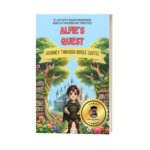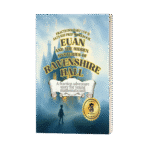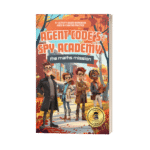For most Year 5 children preparing for selective admissions, 11+ verbal reasoning can be the thing that separates those who get close to passing and those who secure offers from top schools. It’s not an easy part of the exam, and it’s rarely something covered in primary school! But, as with most things, preparation is key.

The verbal reasoning practice papers, set by top grammar schools and independent schools in the UK, ask much more than just spelling. These tests examine the logical connections between words, inference speed, and a broad vocabulary developed over several years of reading. Knowing every type of 11-plus verbal reasoning question that can be expected to come along – and working on them again and again in sample verbal reasoning papers under time conditions – is crucial for 11+ success. Read on to discover some of the test types from common exam boards so that you can fine-tune your revision accordingly.
1. Two Odd Ones Out
The first verbal reasoning topic on our list is a twist on the odd-one-out style of question. You’ll be assigned five new words in the test question; three of them go together naturally (perhaps because they are synonyms, belong in the same category or word type, or have a common spelling pattern), and two don’t. Your task is to determine the two non-belongers. Begin by identifying what the majority of the three have in common—once the connection “clicks,” the last pair will generally become clear.
falcon, hawk, eagle, tiger, leopard (falcon, hawk and eagle are all birds of prey, so tiger and leopard are the two odd ones out.)
2. Word Analogies
Next on our list is word analogies, another question type that’s likely to appear, and you’ll often see these on verbal reasoning practice tests. Knowing lots of word meanings will be crucial here.
Two groups of three words are given in brackets. You must pick one given word from each group so that the completed sentence forms a sensible analogy (the relationship on the left must mirror the relationship on the right). Identify the link—home, sound, young, part-whole, etc.—then choose the matching pair.
wolf is to (howl pack forest)
as
bee is to (hive buzz honey)
A wolf lives in a pack just as a bee lives in a hive. Answer: pack hive.
3. Alphabet Codes
Your child’s ability in problem-solving skills is a good measure of future academic success, which is why you see these sorts of code test styles in the non-verbal reasoning tests. These questions present you with two words, the second of which has been converted into a code by shifting each letter a constant number of places (+ or – the same amount of places). Determine the shift and apply it to a new word.
MELT → OGNV SAFE → ? (Each letter shifts +2 (M→O, E→G, L→N, T→V), so SAFE becomes UCHG.)
4. Closest in Meaning
You’ll be presented with one target word and four or five options and must choose the word with the closest meaning. A useful tip to find a similar meaning is to utter a quick definition for the target word in your mind and then scan the options to find the one closest to it, crossing off any that are easily opposite or unrelated.
Example
Choose the word closest in meaning to frigid:
A) icy B) dusty C) fragile D) vivid
Correct answer: A) icy, because frigid means extremely cold.
5. Make a New Word
Here are two sets of words. The second word in each pair indicates how the initial word has been rearranged or clipped (frequently a reversal, an anagram with one letter off, or a rotation). Apply the same operation to the second word and find the missing word. Going step by step, letter by letter, tends to be faster than if you were attempting to guess the destination.
LIVE > EVIL …. PART > ?
The letters are anagrams, so part becomes TRAP
6. Letters for Numbers
Each letter’s worth is used as its position in the alphabet (A = 1, B = 2 … Z = 26). You will be presented with the value of one or two words and need to calculate or deduce the value of another. Have a mini number line in mind—with a bit of regular practice before the entrance exams, you’ll be able to figure out the numbers in nearly as short a time as reading the letters in the real test.
If CAT = 24 and DOG = 26,
what is the value of COW ? (C (3) + O (15) + W (23) = 41)
7. Hidden Word
In this task, there is a sentence with a short common word (generally 3-5 letters) embedded (i.e. hidden) in a pair of adjacent words. The best way to approach this question is to slowly read the sentence while moving a window of letters from left to right to find the answer (but ignore punctuation if there is any.)
Students years ago always borrowed books. (The answer is GOAL, hidden between ago and always)
8. Move a Letter
Two actual words have been printed side by side. By transferring one letter from the first word to the second—without reversing its position—you have to form two new real words. A good tip is to write down the leftover letters of the longer word and determine which one will make the shorter word a familiar one.
BRAKE RING
Shift the B across: BRAKE → RAKE and RING → BRING. The answer is “move B.”
9. Letter Series
If you have browsed 11+ past papers, letter series are nearly always included. Here, you’re presented with a sequence of letters (usually in pairs) with a disguised alphabetical pattern—e.g. each first letter moves forward while the second moves backwards, or both letters move forward in fixed steps. If you begin this question by translating the letters into alphabet positions (A = 1 … Z = 26), the pattern typically becomes obvious.
AZ BY CX DW ?
The first letters go +1 (A→B→C …) while the second letters go –1 (Z→Y→X …), so the next pair is EV.
10. Number Series
This is the numerical counterpart of letter series: a series of different numbers with a rule (adding, subtracting, doubling, taking alternate operations, using squares, primes, etc.). Calculate the pattern and provide the next number. Writing down the difference or multiple between terms or alternating terms can identify the rule very efficiently.
4 8 12 16 ?
Each term adds 4, so the missing number is 20.
11. Insert a Letter
This exercise in the verbal reasoning exam requires one letter to finish the first word and start the second in two different sets. With the same letter being used four times, the most efficient approach is elimination: write out the letters finishing the first word and eliminate any that cannot start the partner word until a single possibility is left.
col ( ? ) ram bel ( ? ) oll (The only letter that turns every fragment into a real word is t, producing colt, tram, belt, toll)
12. Compound Words
Learn some compound words before attempting non-verbal reasoning papers, as its a common question type. You are presented with two brief lists; your goal is to choose one word from each list which go nicely together to form a single common compound word ( sunflower, snowball, homework …). Browse the first list for a word that can reasonably go before or after the words in the second list, and then read out loud the most promising pair—compound words normally “sound right” straight away, even if you don’t know them or their definitions.
( blue sun foot ) ( print park hall)
blue + print → blueprint. Therefore the answer is (blueprint) blue print.
13. Cloze
Cloze is one of the most common verbal reasoning skills that will appear in most papers, including the GL assessment. You observe here three individual word fragments; the same sequence of three letters must be filled into each fragment (always in the same position) to make three ordinary everyday words. Being mindful of your time limit, read the fragments out quickly in your head, attempting common short strings like ill, ing, ant, ear, etc., until one works in all three.
sk ( ___ ) w ( ___ ) ow p ( ___ ) ar
Inserting ILL gives skill, willow, pillar; therefore the answer is ILL.
14. Letter Combinations
These questions present an analogy constructed from two-letter combinations (PX : QW :: TV : ?). Consider each letter’s position in the alphabet; the first letter in each group tends to go forward while the other goes backwards by the same amount. After you identify the pattern, use it with the new pair and write down the answer.
PX is to QW as TV is to ?
P→Q is +1, X→W is –1, so apply +1/–1 to T and V: T→U, V→U. The missing pair is UU
15. Applying Logic to Written Information
This is the 11 + verbal-reasoning form of a short word problem: everything happens in sentences and you have to work out a logical conclusion—usually about time, rate, order, or basic probability. Underline the important numbers or relationships, jot down a brief table or timeline, and make sure your answer meets every statement.
Example
“One librarian can stamp 240 books in an hour. How many books can three librarians stamp in 15 minutes, working at the same rate?”
One librarian does 240 ÷ 4 = 60 books in 15 minutes, so three librarians manage 3 × 60 = 180 books
16. Opposite Meaning
You are presented with two short word lists and must select one word from each list whose meanings are the most opposite (some might be slightly opposite, which can sometimes catch you out). Begin by surveying each list for a “pivot” word with a single-word antonym (e.g. deep ↔ shallow, scarce ↔ plentiful). Once you believe a pair of such opposites has been located, double-check to be certain the remaining cross-matches aren’t stronger. There will often be some unusual words that might not be familiar to the average 10-year-old, which underscores the importance of reading to gain a wide vocabulary. We have a word list here which predicts the 300 most likely words to appear in the 11 plus, so make sure you download it for your child’s exam preparation!
[ excited, sorrow, shallow] [depressed, curious, deep]
The answer is shallow and deep, direct opposites
17. Find the Sum
Some of the numerical reasoning questions are a true test of logical thinking. This form presents a brief number sentence with one missing value. Work this like a standard equation: carry out what operations you can, and then work out the question mark. As any of the four operation symbols (+, −, ×, ÷) may be used, be careful with the order of working (BIDMAS).
45 – 18 = 12 + ?
First work out the left side: 45 – 18 = 27.
Then 27 = 12 + ? ⇒ ? = 27 − 12 = 15.
18. Matching Number Sets
You’ll be presented with mini-sets of three numbers in this form: (a (b) c). The two outer numbers share a rule generating the middle number—multiplication, addition, difference, and so forth. A pair of worked examples will be provided before a third one with a missing middle number; figure out the rule and then apply it.
(2 (8) 4) (6 (30) 5) (3 ( ? ) 7)
In each set, the middle number is the product of the outer two:
2 × 4 = 8 and 6 × 5 = 30, so 3 × 7 = 21.
11 Plus Verbal Reasoning: Some Final Thoughts
By splitting each of the 11 plus verbal reasoning types into bite-sized chunks, you are now one step closer to having a focused revision plan. Work around the question sets in short intervals with a timer, constantly reviewing any mistakes so how things work starts to become second nature. Intermingle printed mock non-verbal reasoning tests with rapid-fire mental exercises and continue to boost your child’s vocabulary by reading a wide variety of classic novels for the most comprehensive preparation. Regular practice builds confidence and keeps anxiety in check on exam day. And if you want a more fun and effective way of prepping for the 11+, check out Smarty Panther’s workbooks. Our unique story-based approach keeps children engaged for longer and takes the stress out of revision. Browse our latest range here.
Pin This Post





